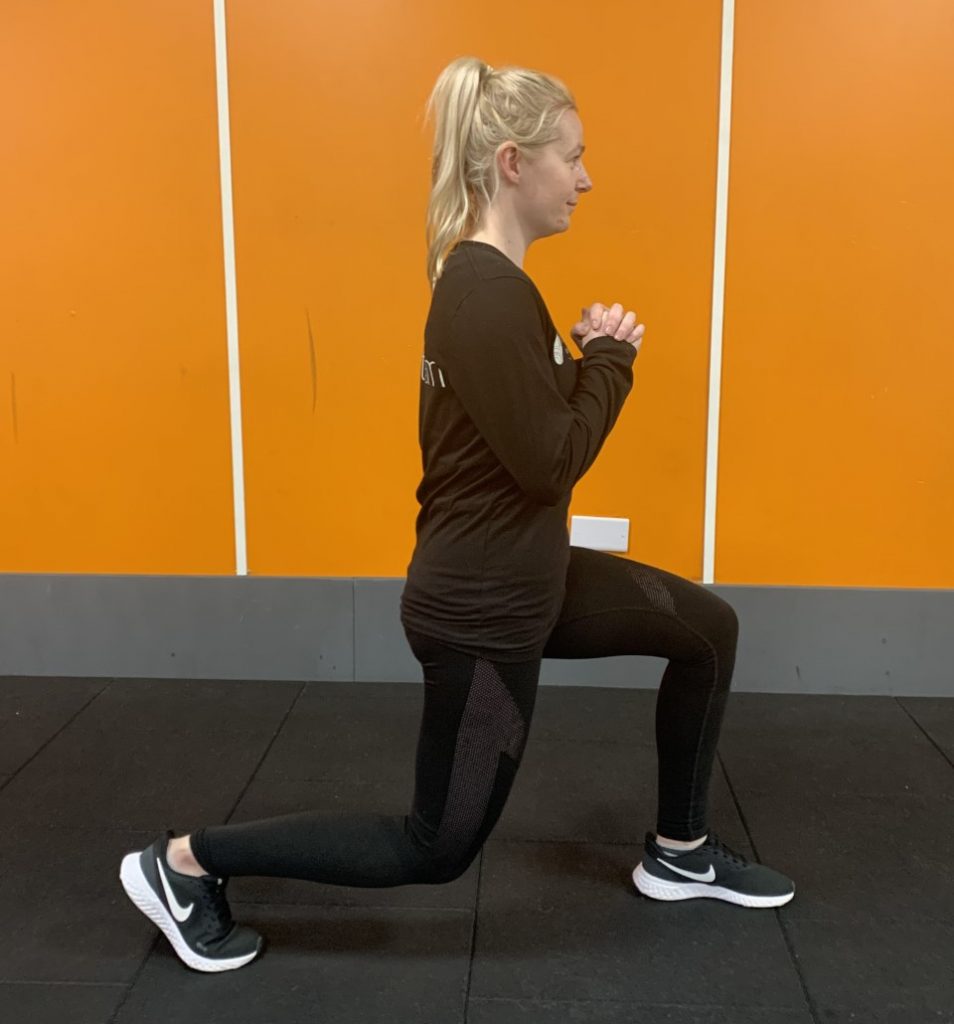Lunges are one of the best ways to challenge your leg muscles. Endless variations of this exercise means there are always new options to try, including progressions and regressions – how good!
One of the main benefits of a lunge is the fact it is a unilateral movement (the technical way of saying you work one leg at a time). This will ensure both legs are working as hard as each other to help improve any imbalances. For example, in a squat or leg press both legs are working together to complete the movement, meaning if you have one leg that is slightly weaker than the other then your stronger leg will compensate for this and you may not even notice that one leg is slightly weaker. Working one leg at a time will ensure those muscles are working to their maximum rather than letting the stronger side carry them through the movement.
During a lunge you will be primarily working your quadricep muscle in the front leg along with your glute and hamstring in the leg that is positioned back. You will also be working your core muscles to help with your balance as well as calf muscles and hip flexors. So many muscles worked at once, it’s no wonder everyone loves to hate lunges!
Some people suffer with straining their knees when performing lunges. If this happens to you then it is a good idea to reduce the range of motion and start with smaller steps as this will still improve your strength and help to develop your alignment. From here you can then slowly increase the distance of your step and build it up.
Things to remember:
- Keep your head and chest up
- Engage your core throughout the movement
- Maintain hip width with your foot positioning so that you don’t feel like you are stood on a tightrope!
- Aiming for 90 degree bend in both knees
Basic varieties of a lunge: Forwards, Reverse, Side, Walking
Forwards lunge:
- Keep your body upright and looking ahead
- Engage your core
- Step forwards with one leg and lower yourself until both legs are bent at around a 90 degree angle
- Ensure your front knee isn’t too far forwards – aim for it being above your ankle
- Keep the weight in your front heel as you push back to standing position
Reverse lunge:
- Exactly the same as above – body upright, core engaged
- Step backwards with one leg and lower until both legs have around a 90 degree bend
- Keep the weight in the front leg and push into this heel to drive back up to the starting position
Side lunge:
- Start standing tall, body upright, core engaged
- Take a big step out to the side
- Lower yourself from the hips until the knee of your leading leg is around a 90 degree bend
- Keep your trailing leg straight
- Push back up to the starting position
Walking lunge:
- Exactly the same as above – body upright, core engaged
- Step forwards with one leg until you reach the 90 degree bends in both legs
- From here drive up with the front leg and step through with the other leg
- Place this leg in front and again achieve those 90 degree bends in the legs
- Repeat again on the other side
Some progressions of these lunges can include adding weight, alternating legs or doing one side at a time, changing the tempo, adding equipment such as TRX, or changing the foot position/elevation.
If you would like help with your lunge technique or some exercise ideas for you to progress with these then our team of instructors will be more than happy to help you.
Grab us on the gym floor or book an appointment with one of us at reception!


